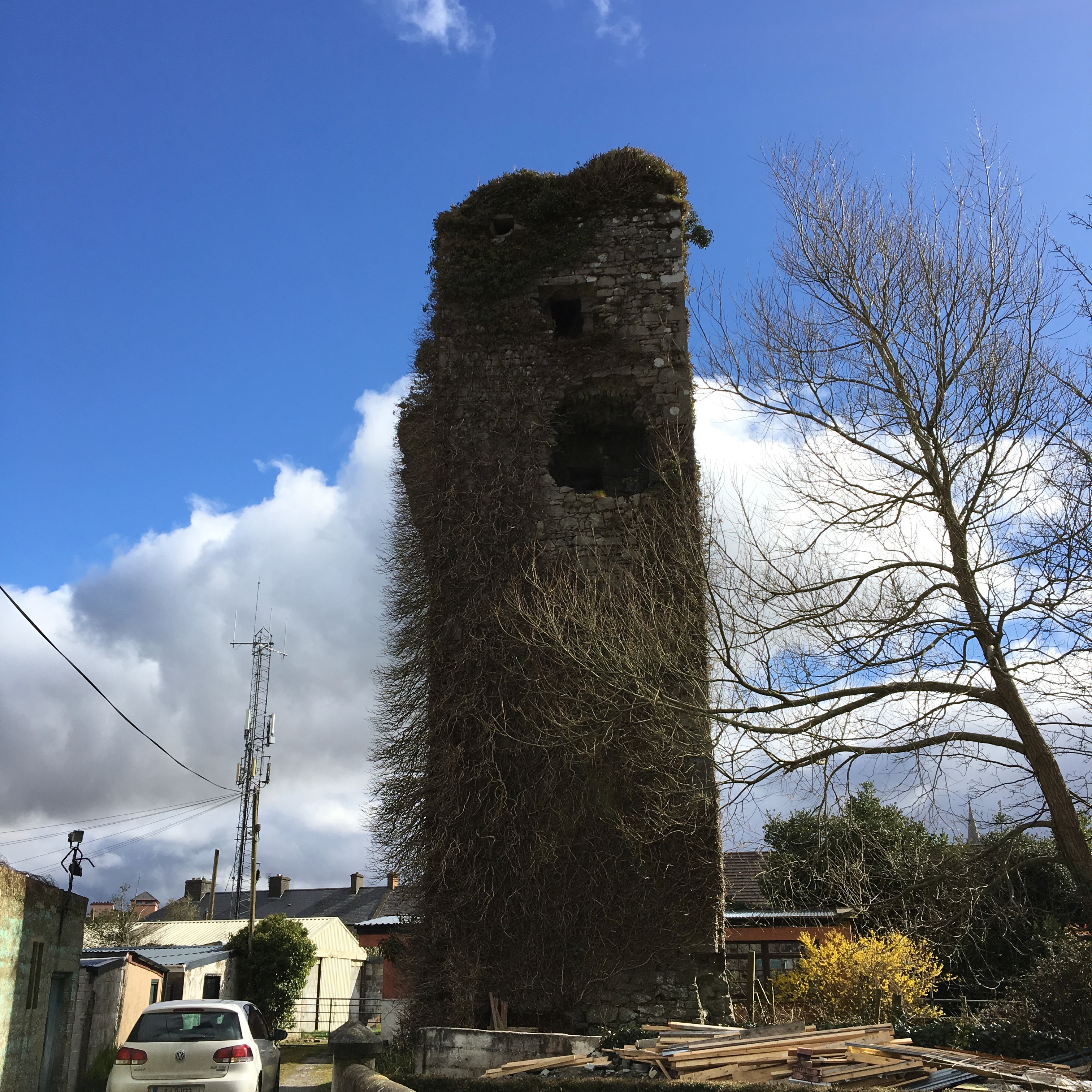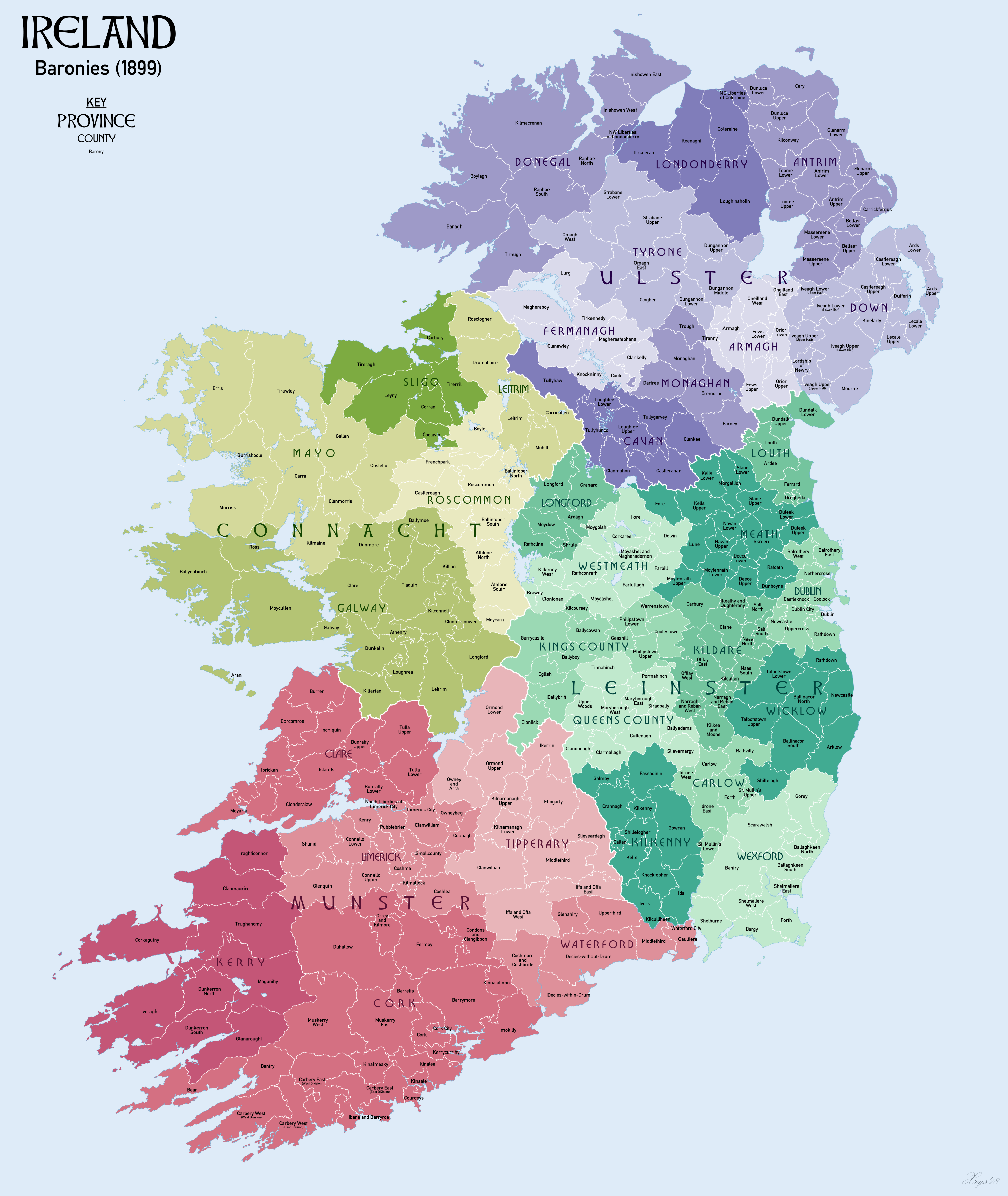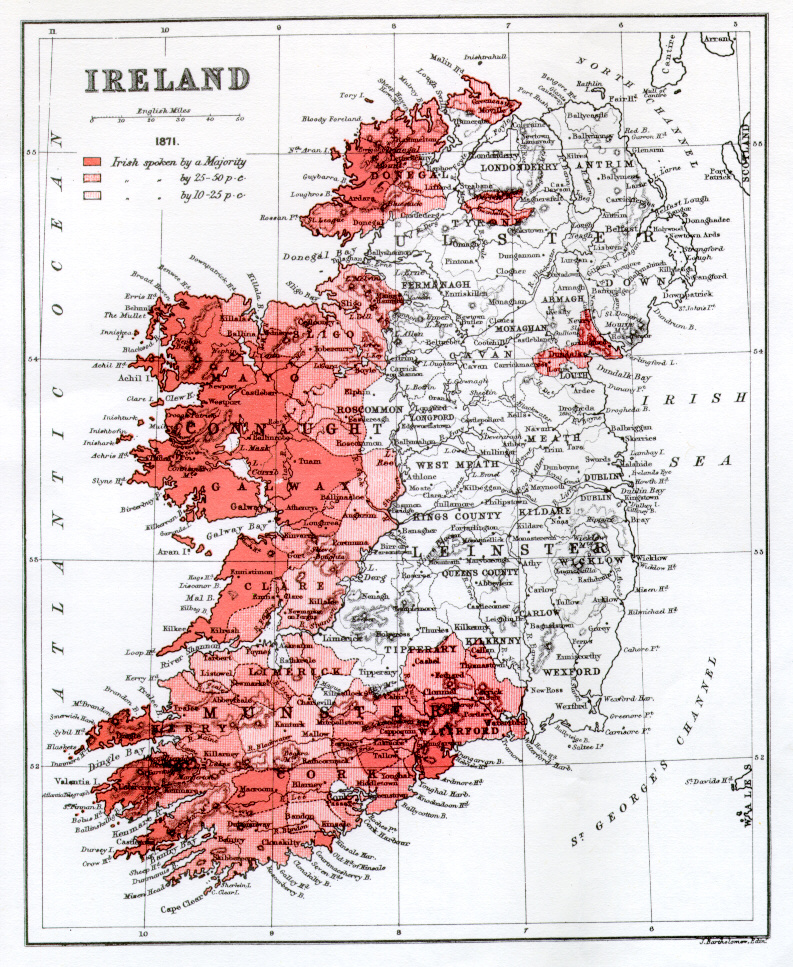|
Trughanacmy
Trughanacmy ( gle, Triúcha an Aicme) is a barony in County Kerry, Ireland. The barony is an obsolete administrative area, having ceased to have any government function since the enactment of the Local Government (Ireland) Act 1898. In 1881 the barony had an area of .''Guy's Postal Directory of Munster'' (1886) Name The name of the barony was derived from the Irish ''Triocha Chead an Aicme Chiarraighe'', or "Barony of the Ciarraige". The Ciarraighe, or "people of Ciar" were the pre-Gaelic tribe who lived in area, and who gave their name to the county. Parishes The barony contained the whole or part of twenty-one civil parishes: *Annagh Annagh or Anagh may refer to: Places Republic of Ireland * Annagh, County Cavan, townland * Annagh, townland in Kilkenny West civil parish, barony of Kilkenny West, County Westmeath, Republic of Ireland Note: Nearly 30 other townlands in the Re ... (part) *Ardfert (part: Ardfert Village is in the Barony of Clanmaurice) *Ballincuslane * B ... [...More Info...] [...Related Items...] OR: [Wikipedia] [Google] [Baidu] |
Blennerville
Blennerville (, meaning "the seat/home of the Morans") is a small village and now a suburb of Tralee, County Kerry, Ireland. It is approximately west of the town centre on the N86 road to Dingle, where the River Lee enters Tralee Bay. The village was formerly Tralee's port, and is connected to the town centre by the Tralee Ship Canal. Part of Blennerville electoral division falls within the area of Tralee Town Council, and at the 2011 census had a population of 141. The remaining portion, outside the urban boundaries, had a 2011 population of 556. History Blennerville was originally called ' (anglicised as ' or '),Originally published and it has been speculated that it was the ancient site of the Tramore ford, the only escape route afforded to the 15th Earl of Desmond from Tralee towards the south, before his capture and execution in 1583. A bridge was built at the site in 1751, and in 1783 Sir Rowland Blennerhassett renamed it Blennerville after his family. Blennervi ... [...More Info...] [...Related Items...] OR: [Wikipedia] [Google] [Baidu] |
County Kerry
County Kerry ( gle, Contae Chiarraí) is a county in Ireland. It is located in the South-West Region and forms part of the province of Munster. It is named after the Ciarraige who lived in part of the present county. The population of the county was 155,258 at the 2022 census, A popular tourist destination, Kerry's geography is defined by the MacGillycuddy's Reeks mountains, the Dingle, Iveragh and Beara peninsulas, and the Blasket and Skellig islands. It is bordered by County Limerick to the north-east and Cork County to the south and south-east. Geography and subdivisions Kerry is the fifth-largest of Ireland's 32 traditional counties by area and the 16th-largest by population. It is the second-largest of Munster's six counties by area, and the fourth-largest by population. Uniquely, it is bordered by only two other counties: County Limerick to the east and County Cork to the south-east. The county town is Tralee although the Catholic diocesan seat is Killarne ... [...More Info...] [...Related Items...] OR: [Wikipedia] [Google] [Baidu] |
Barony Of Clanmaurice
{{Use Irish English, date=May 2021 Clanmaurice (''Clann Mhuiris'') is a barony in County Kerry, Ireland. It contains 16 Parishes and it is roughly 485 km2. Parishes *Ardfert *Ballyheigue * Duagh *Dysert (Partly in Trughanacmy) * Finuge *Kilcarragh *Kilfeighny * Kilflyn *Killahan *Killury * Kilmoyley *Kilshenane *Kiltomy *Listowel *O'Dorney *Rattoo See also * List of baronies of Ireland *County Kerry County Kerry ( gle, Contae Chiarraí) is a county in Ireland. It is located in the South-West Region and forms part of the province of Munster. It is named after the Ciarraige who lived in part of the present county. The population of the cou ... ReferencesBarony Map of Ireland Baronies of Count ... [...More Info...] [...Related Items...] OR: [Wikipedia] [Google] [Baidu] |
Ballymacelligott
Ballymacelligott () is a civil parish in the north of County Kerry in Ireland. It is situated east of Tralee in the historical barony of Trughanacmy. History A quarry was first built in Ballymacelligott in 1811 as a source for building materials for construction of a barracks in Tralee. The local Church of Ireland (Anglican) church, Ballymacelligott Church, was built in 1820, and is listed on Kerry County Council's Record of Protected Structures. It is in the Diocese of Limerick and Killaloe. The nearby Catholic church, the Church of the Immaculate Conception, is in the Roman Catholic Diocese of Kerry The Diocese of Kerry ( ga, Deoise Chiarraí) is a Roman Catholic diocese in south-western Ireland, one of six suffragan dioceses in the ecclesiastical province of Cashel and Emly. The cathedral church of the diocese is St Mary's Cathedral ... and was described in 1837 as being a "large slated building". Edenburn House, later used as a hospital, is also in Ballymac ... [...More Info...] [...Related Items...] OR: [Wikipedia] [Google] [Baidu] |
Ballyseedy
Ballyseedy () is a townland in County Kerry, Ireland. It was historically situated in the parish of Ballyseedy, within the barony of Trughanacmy. The townland contains a number of notable landmarks, including Ballyseedy Wood, a bridge over the Ballycarty River and a ruined Protestant church. There is also a large restored castle (Ballyseedy Castle) which is in use as a hotel. Location Ballyseedy is located off the N21 road, southeast of Tralee Tralee ( ; ga, Trá Lí, ; formerly , meaning 'strand of the Lee River') is the county town of County Kerry in the south-west of Ireland. The town is on the northern side of the neck of the Dingle Peninsula, and is the largest town in Coun .... A section of the River Lee, from which Tralee takes its name, forms the northern edge of the townland. History Ballyseedy Wood is an ancient woodland dating at least to the 16th century, when it was mapped by Sir Edward Denny. The wood contains the ruins of Ballyseedy House (or Old B ... [...More Info...] [...Related Items...] OR: [Wikipedia] [Google] [Baidu] |
Brosna, County Kerry
Brosna () is a village and parish situated in the Sliabh Luachra area of County Kerry, Ireland. It lies from the town of Castleisland. The civil parish of Brosna consists of the village and a number of townlands. It is a mainly agricultural area, supporting two churches, two schools, a post office, and five public houses. Geography Brosna is a village in north east County Kerry. A number of Munster rivers have their sources in the parish, including the Clydagh, the Braonach, and the Munster Blackwater. The highest point is Mount Eagle. It is in the barony of Trughanacmy. Crochaun Mountain is above sea level. Brosna lies close to the Cork/Kerry and Kerry/Limerick borders, and neighbouring towns include Castleisland and Knocknagoshel in Kerry, Abbeyfeale and Mountcollins in Limerick, and Ballydesmond and Rockchapel in Cork. History In Samuel Lewis's 1837 ''Topographical Dictionary of Ireland'', Brosna was recorded as having 2168 inhabitants in 18,013 statute acres. The s ... [...More Info...] [...Related Items...] OR: [Wikipedia] [Google] [Baidu] |
Castleisland
Castleisland () is a town and commercial centre in County Kerry in south west Ireland. The town is known for the width of its main street. As of the 2016 Census, Castleisland had a population of 2,486. Castleisland was described by one of its citizens, journalist Con Houlihan, as "not so much a town as a street between two fields". History Castleisland was the centre of Desmond power in Kerry. The village got its name, 'Castle of the Island of Kerry', from a castle built in 1226 by Geoffrey Maurice (or de Marisco). Maurice had been the Lord Justice of Ireland during the reign of King Henry III. The island was created by turning the waters of the River Maine into a moat around the castle. Sometime in the 120 years after its construction, the castle was taken by the forces of the Earl of Desmond. It is known that in 1345 the castle was being held for the Earl of Desmond by Sir Eustace de la Poer and other knights when it was captured by Sir Ralph Ufford, Lord Justice of I ... [...More Info...] [...Related Items...] OR: [Wikipedia] [Google] [Baidu] |
Barony (Ireland)
In Ireland, a barony ( ga, barúntacht, plural ) is a historical subdivision of a county, analogous to the hundreds into which the counties of England were divided. Baronies were created during the Tudor reconquest of Ireland, replacing the earlier cantreds formed after the original Norman invasion.Mac Cotter 2005, pp.327–330 Some early baronies were later subdivided into half baronies with the same standing as full baronies. Baronies were mainly cadastral rather than administrative units. They acquired modest local taxation and spending functions in the 19th century before being superseded by the Local Government (Ireland) Act 1898. Subsequent adjustments of county boundaries mean that some baronies now straddle two counties. The final catalogue of baronies numbered 331, with an average area of ; therefore, each county was divided, on average, into 10 or 11 baronies. Creation The island of Ireland was "shired" into counties in two distinct periods: the east and sou ... [...More Info...] [...Related Items...] OR: [Wikipedia] [Google] [Baidu] |
Ireland
Ireland ( ; ga, Éire ; Ulster Scots dialect, Ulster-Scots: ) is an island in the Atlantic Ocean, North Atlantic Ocean, in Northwestern Europe, north-western Europe. It is separated from Great Britain to its east by the North Channel (Great Britain and Ireland), North Channel, the Irish Sea, and St George's Channel. Ireland is the List of islands of the British Isles, second-largest island of the British Isles, the List of European islands by area, third-largest in Europe, and the List of islands by area, twentieth-largest on Earth. Geopolitically, Ireland is divided between the Republic of Ireland (officially Names of the Irish state, named Ireland), which covers five-sixths of the island, and Northern Ireland, which is part of the United Kingdom. As of 2022, the Irish population analysis, population of the entire island is just over 7 million, with 5.1 million living in the Republic of Ireland and 1.9 million in Northern Ireland, ranking it the List of European islan ... [...More Info...] [...Related Items...] OR: [Wikipedia] [Google] [Baidu] |
Local Government (Ireland) Act 1898
The Local Government (Ireland) Act 1898 (61 & 62 Vict. c. 37) was an Act of the Parliament of the United Kingdom of Great Britain and Ireland that established a system of local government in Ireland similar to that already created for England, Wales and Scotland by legislation in 1888 and 1889. The Act effectively ended landlord control of local government in Ireland.Gailey 1984 Background From the 1880s the issue of local government reform in Ireland was a major political issue, involving both Irish politicians and the major British political parties. Questions of constitutional reform, land ownership and nationalism all combined to complicate matters, as did splits in both the Liberal Party in 1886 and the Irish Parliamentary Party in 1891. Eventually, the Conservative government of Lord Salisbury found it politically expedient to introduce the measures in 1898. The legislation was seen by the government as solving a number of problems: it softened demands for Home Rul ... [...More Info...] [...Related Items...] OR: [Wikipedia] [Google] [Baidu] |
Irish Language
Irish (an Caighdeán Oifigiúil, Standard Irish: ), also known as Gaelic, is a Goidelic languages, Goidelic language of the Insular Celtic branch of the Celtic language family, which is a part of the Indo-European languages, Indo-European language family. Irish is indigenous language, indigenous to the Ireland, island of Ireland and was the population's first language until the 19th century, when English (language), English gradually became Linguistic imperialism, dominant, particularly in the last decades of the century. Irish is still spoken as a first language in a small number of areas of certain counties such as County Cork, Cork, County Donegal, Donegal, County Galway, Galway, and County Kerry, Kerry, as well as smaller areas of counties County Mayo, Mayo, County Meath, Meath, and County Waterford, Waterford. It is also spoken by a larger group of habitual but non-traditional speakers, mostly in urban areas where the majority are second language, second-language speakers. ... [...More Info...] [...Related Items...] OR: [Wikipedia] [Google] [Baidu] |
Civil Parishes In Ireland
Civil parishes () are units of territory in the island of Ireland that have their origins in old Gaelic territorial divisions. They were adopted by the Anglo-Norman Lordship of Ireland and then by the Elizabethan Kingdom of Ireland, and were formalised as land divisions at the time of the Plantations of Ireland. They no longer correspond to the boundaries of Roman Catholic or Church of Ireland parishes, which are generally larger. Their use as administrative units was gradually replaced by Poor Law Divisions in the 19th century, although they were not formally abolished. Today they are still sometimes used for legal purposes, such as to locate property in deeds of property registered between 1833 and 1946. Origins The Irish parish was based on the Gaelic territorial unit called a '' túath'' or '' Trícha cét''. Following the Norman invasion of Ireland, the Anglo-Norman barons retained the ''tuath'', later renamed a parish or manor, as a unit of taxation. The civil parish ... [...More Info...] [...Related Items...] OR: [Wikipedia] [Google] [Baidu] |
.jpg)
_2.jpg)






